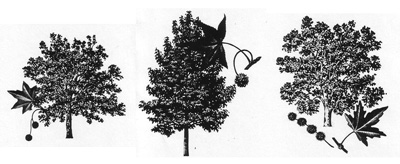Plant a Tree
I recall reading that people’s impressions of neighborhoods are significantly impacted by their landscaping. Typically, those neighborhoods with mature and varied landscaping left a better impression on the viewers. In other words, the architecture was not the determining factor making a residential neighborhood look good. I do not remember the source of this observation, but we all can think of examples to confirm it.

I observed this recently when Valerie and I drove through the Carmel. Of course, there are reasons why this village is a vacation destination. It has a few attractions such the benign climate, the ocean with white sandy beaches between rocky shores, the history of Bohemian artists, the small scale and high density of smaller homes. But if you could put all this aside for sake of discussion, and imagine that the lush landscaping was removed (heaven forbid), you would then notice that many of the cottages are simply generic. Yes, there are spectacular examples of residential architecture, but these are the exceptions that prove my point. It is the pine forests on the Peninsula that create such pleasing towns.
A friend of our family, Rebecca Twitchell, is involved in a tree-planting program for the relatively barren neighborhood of Smith Hill in Providence, Rhode Island. She is motivated by the positive effects that will multiply from this landscaping effort. (Her website is http://www.half-full.com).
Plenty of native plants and trees may increase the value of a neighborhood, reduce homeowner energy costs, and contribute to the urban habitat. Abundant landscaping also contributes to neighborhood pride and enjoyment for homeowners and visitors. So get out your shovel and start planting.
-TJC (written Nov. 8th 2009)